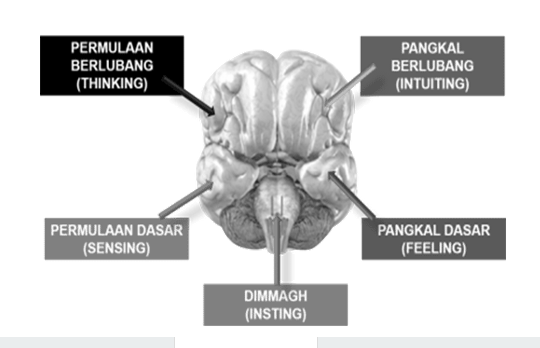Exploring Teachers and Students’ Perceptions of Enhancing Speaking Skills Using the STIFIn Concept
DOI:
https://doi.org/10.51574/ijrer.v4i3.3192Keywords:
High School, Islamic Boarding School, Speaking Skill, STIFIn Concept, Teachers and Students’Abstract
This study aimed to understand how teachers and students perceived the use of the STIFIn concept in improving students' speaking skills. The STIFIn concept, which was based on five types of human intelligence—sensing, thinking, intuiting, feeling, and instinct—was believed to help design more personalized and effective learning strategies. The study used a qualitative method with data collection techniques in the form of semi-structured interviews with teachers and students. Motivator Quran Darussalam, a high school Islamic boarding school, is located at the research site. The steps used to collect data included conducting interviews, making observations, and reviewing documents related to teaching speaking skills. Data reduction, data display, data condensation, and conclusion drafting are methods of data analysis. The results of the research were that the use of the STIFIn concept helped teachers to recognize the characteristics of students' intelligence and thus to adapt teaching methods more appropriately. Students also reported an improvement in their self-confidence and speaking skills following the implementation of the method. However, there were still some challenges in adapting the method to different types of student intelligence, which required in-depth training and understanding on the part of teachers. Overall, the STIFIn concept offered a new approach that could enrich language teaching in the classroom.
References
Akhter, S. (2021). Exploring the significance of speaking skill for EFL learners. Sjesr, 4(3), 1–9. https://doi.org/10.36902/sjesr-vol4-iss3-2021(1-9)
Bsharat, T. R., & Barahmeh, M. Y. (2020). The influence of applying educational active drama in enhancing speaking skills in teaching-learning English language: A theoretical response. Technium Soc. Sci. J., 14, 10.
Chew, S. L., & Cerbin, W. J. (2021). The cognitive challenges of effective teaching. The Journal of Economic Education, 52(1), 17-40.
Cipta, D. A. S., & Argarini, D. F. (2024). Development Of Interactive Learning Media By Prospective Mathematics Teachers For Dyscalculia Students Based On The Stifin Concept In Montessori Learning. In International Seminar On Islamic Education & Peace (Vol. 4, pp. 806-813).
Diana, E., & Sholehah, S. W. (2022). Parenting Self-Efficacy Based on Stifin As Intellegence Mechine of Learning. PEDAGOGIK: Jurnal Pendidikan, 9(1), 82–96. https://doi.org/10.33650/pjp.v9i1.3446
Fadilah, D. D., & Rizqi, M. (2024). Implementation of STIFIn Concept in Tahfizh al-Qur’an Learning at SMP IT Madani Payakumbuh. Al Bahri: Journal of Islamic Education, 1(1), 24–29. https://doi.org/10.69880/albahri.v1i1.111
Ferdiyanto, F., Hamdani, B., Islam, R., & Harzanah, N. D. (2021). Students’ Perception Toward Teachers’ Attitude, Teaching Style, And Teaching Strategies In Learning English. Teaching English as Foreign Language, Literature and Linguistics, 1(2), 18-33. https://doi.org/10.33752/teflics.v1i2.2162
Ferdiyanto, F., & Kholili, A. (2022). Developing Supplementary Speaking Material for Eighth Grade Students. Journal of English Language Teaching and Cultural Studies, 5(2), 138–149.
Fithriyah, F. (2024). Students’ Experiences in Learning Language Skills. Intelektualita, 13(1). http://dx.doi.org/10.22373/ji.v13i1.25216
Hamdani, B., Islam, R., & Hotimah, H. (2021). Engaging students’ autonomous learning across vocational secondary schooling: Teachers’ role and challenge. English Teaching Journal and Research: Journal of English Education, Literature, And Linguistics, 1(2), 95–111. https://doi.org/10.55148/etjar.v1i2.254
Han, H., Islam, M. H., & Ferdiyanto, F. (2023). An Analysis of Student’s Difficulties in English Speaking, a Descriptive Study. EDUTEC: Journal of Education And Technology, 6(4), 497–503.
Hz, B. I. R. (2022). An Exploration On Students’public Speaking Anxiety: Stifin Perspective. LLT Journal: A Journal on Language and Language Teaching, 25(1), 149-159.
Islam, R. (2022). Teaching speaking skill of English as foreign language in secondary school level. Journey: Journal of English Language and Pedagogy, 5(2), 229–239. http://ejurnal.uibu.ac.id/index.php/journey/article/view/560
Islam, R. (2023). Parents’ Perception and Involvement toward English for Young Learners in Rustic Area. Jurnal Pendidikan, 9(2), 2548–4419. https://ejournal.unzah.ac.id/index.php/attalim/article/view/1113
Islam, R. (2024). Analysis of English Learning Activities for Medical Students. 11(2), 209–215. http://jurnalpendidikan.unisla.ac.id/index.php/elink/article/view/1128
Islam, R., & Birchok, D. (2024). The perspective of ESP teaching: a study of english subject for undergraduate nursing students at Hafshawaty University. Interling : International Journal of English Language Teaching, Literature and Linguistics, 2(1), 32–36. https://doi.org/10.55210/interling.v2i1.1781
Kwee, C. T. T. (2021). I want to teach sustainable development in my English classroom: A case study of incorporating sustainable development goals in English teaching. Sustainability, 13(8), 4195. https://doi.org/10.3390/su13084195
Liu, M., & Yu, D. (2023). Towards intelligent E-learning systems. Education and Information Technologies, 28(7), 7845-7876. https://doi.org/10.1007/s10639-022-11479-6
Maharani, R. S., & Afifi, N. (2024). Promoting Self-Directed Learning through Netflix as a Learnng Aid of Listening and Speaking: An Investigation toward EFL Students’ Voices. Journal of Languages and Language Teaching, 12(1), 212-225. https://doi.org/10.33394/jollt.v12i1.8377
Mazenod, A., Francis, B., Archer, L., Hodgen, J., Taylor, B., Tereshchenko, A., & Pepper, D. (2018). Nurturing learning or encouraging dependency? Teacher constructions of students in lower attainment groups in English secondary schools. Cambridge Journal of Education, 49(1), 53–68. https://doi.org/10.1080/0305764X.2018.1441372
Paulsrud, D., & Nilholm, C. (2020). Teaching for inclusion – a review of research on the cooperation between regular teachers and special educators in the work with students in need of special support. International Journal of Inclusive Education, 27(4), 541–555. https://doi.org/10.1080/13603116.2020.1846799
Poniman, F., & Amalia, N. (2020). A Grand Theory of STIFIn Personality: Basic Functions Theory Revisited. International Journal of Psychosocial Rehabilitation, 24(5), 710–715.
Roshid, M. M., & Kankaanranta, A. (2025). English communication skills in international business: Industry expectations versus university preparation. Business and Professional Communication Quarterly, 88(1), 100-125. https://doi.org/10.1177/23294906231184814
Salafiyah, B. R., Sahlan, M., & Wahyuni, I. (2025). Analysis of Al-Qur’an Memorization Ability based on STIFIn Intuiting and Feeling Test Results on Tahfidz Program Students of MTs Unggulan Nuris Jember. Journal of Science and Education (JSE), 5(2), 632–642. https://jse.rezkimedia.org/index.php/jse/article/view/475
Selvi, A. F., Galloway, N., & Rose, H. (2023). Teaching English as an international language. Cambridge University Press.
Shalihah, M. A., Supramaniam, K., & Kholidi, M. A. (2022). Teachers' And Students'perspectives Of Factors Affecting Students'speaking Performance In Learning English. Jurnal Tatsqif, 20(1), 68-86.
Shemshack, A., Kinshuk, & Spector, J. M. (2021). A comprehensive analysis of personalized learning components. Journal of Computers in Education, 8(4), 485-503. https://doi.org/10.1007/s40692-021-00188-7
Sjølie, E., Strømme, A., & Boks-Vlemmix, J. (2021). Team-skills training and real-time facilitation as a means for developing student teachers’ learning of collaboration. Teaching and Teacher Education, 107, 103477. https://doi.org/10.1016/j.tate.2021.103477
Simanullang, P. (2022). Application of Introduction To Personality Psychology 5 Genetic Intelligence Through The Concept of Stifin Test. ENGGANG: Jurnal Pendidikan, Bahasa, Sastra, Seni, Dan Budaya, 3(1), 100–109. https://e-journal.upr.ac.id/index.php/enggang/article/view/5214
Suliman, W. (2024). Speaking difficulties that young ESL learners encounter. In TESOL Teacher Research: Perspectives from Arabia (pp. 175-188). Cham: Springer Nature Switzerland. https://doi.org/10.1007/978-3-031-69789-0_15
Siregar, A. M. P. (2022). Tertiary-level Students’ Public Speaking Anxiety: A Case Study of English Education Department Students in Indonesia. SALEE: Study of Applied Linguistics and English Education, 3(2), 318–338. https://doi.org/10.35961/salee.v3i2.507
Sumaiya, B., Srivastava, S., Jain, V., & Prakash, V. (2022). The role of effective communication skills in professional life. World Journal of English Language, 12(3), 134–140
Taguchi, N., & Ishihara, N. (2018). The pragmatics of English as a lingua franca: Research and pedagogy in the era of globalization. Annual Review of Applied Linguistics, 38, 80-101.
Tai, T. Y., & Chen, H. H. J. (2024). Improving elementary EFL speaking skills with generative AI chatbots: Exploring individual and paired interactions. Computers & Education, 220, 105112. https://doi.org/10.1016/j.compedu.2024.105112
Taylor, S. J., Bogdan, R., & DeVault, M. L. (2015). Introduction to qualitative research methods: A guidebook and resource. John Wiley & Sons.
Utami, Y. P. (2020). The Effect Of Using STIFIn Method In Teaching Speaking English Conversation At The Tenth Grade Of SMK Bina Satria Medan (Doctoral dissertation, Universitas Islam Negeri Sumatera Utara).
Yandri, H., Juliawati, D., Alfaiz, A., Ramdani, R., Rusliah, N., Yuzarion, Y., ... & Syaputra, Y. D. (2021). The Implementation of STIFIn Intelligence Test for Students’ Career Planning: An Introduction and Impact of STIFIn Approach. Psychol Psychother Res Stud, 4(5). https://papers.ssrn.com/sol3/papers.cfm?abstract_id=3849265
Zainuddin, Z., & Wafi, A. (2024). Implementation Of Arabic And English Learning To Improve The Speaking Skills Of Female Students At Nurus Salafiyah Islamic Boarding School Probolinggo City. Insya: Journal of Arabic Studies, 2(2), 1–14. https://ejournal.kalamnusantara.org/index.php/insya/article/view/134
Zarrinabadi, N., Lou, N. M., & Darvishnezhad, Z. (2021). To praise or not to praise? Examining the effects of ability vs. effort praise on speaking anxiety and willingness to communicate in EFL classrooms. Innovation in Language Learning and Teaching, 17(1), 88–101. https://doi.org/10.1080/17501229.2021.1938079

Downloads
Published
How to Cite
Issue
Section
License
Copyright (c) 2025 Siti Zulaiha, Feri Ferdiyanto, Raudhatul Islam

This work is licensed under a Creative Commons Attribution-ShareAlike 4.0 International License.









1.png)













